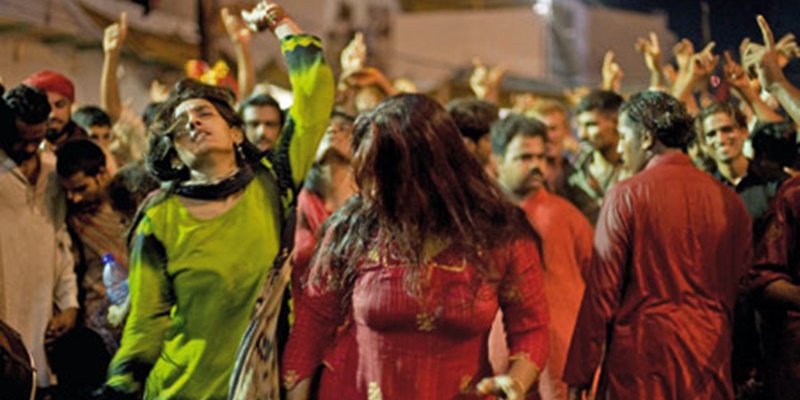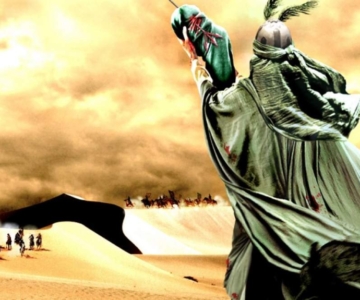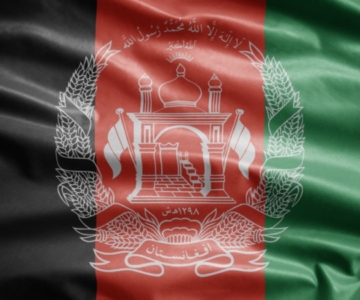James Astill writing for The Economist says that the Islam of the Taliban is far removed from the popular Sufism practised by most South Asian Muslims
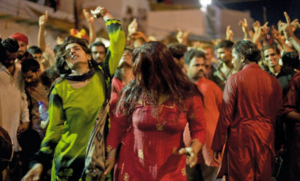
“NORMALLY, we cannot know God,” says Rizwan Qadeer, a neat and amiable inhabitant of Lahore, Western-dressed and American-educated, eyes shining behind his spectacles. “But our saints, they have that knowledge.”
Mr Qadeer is standing in the belly of a shrine that he is building to a modern gnostic, Hafiz Iqbal, whom he venerates especially. Cool, and smelling pleasantly of damp earth and mortar, it holds Iqbal’s grave, covered by an embroidered green shroud and sprinkled with pink rose petals. A young man—a Pakistani resident of London, Mr Qadeer says—stands in silent prayer to the saint, who was employed by Lahore’s municipal government as a street-sweeper, and died in 2001. In a tradition of popular Sufism, which mingles classical Islamic mysticism with Hinduism and folk beliefs and is a dominant feature of Islam in South Asia, the saint’s divine essence, or baraka, emanates from his tomb. “Physically, our holy saints do die,” says Mr Qadeer. “But the spirit is still here, because they have reached eternity.”
Echoing down a winding stairwell, a scraping of masonry and clink of chisel on marble signal a remarkable monument rising. It is in the scruffy Lahori suburb of Baghbanpura, where Iqbal lived for six decades. From a narrow alley running alongside the shrine, it is mostly hidden: its high outer walls, of recessed brickwork speckled with multicoloured tiles, rising out of sight to a pair of domes and skinny minarets. A few steep steps lead into a small cloistered forecourt, where masons are at work.
Either side of the forecourt, about ten metres apart, are two false burial chambers. These are beautifully decorated, with white marble lattice and marble mosaics studded with green jade, lapis lazuli and agate. One is for Iqbal and the other for his mentor, a mystic called Baba Hassan Din, who lived in a brick cell on this site and died in 1968. The men’s true graves lie underneath, in brick-walled chambers, faintly murmuring with the sounds of the street outside.
According to Mr Qadeer—who had it from Iqbal—Din was, unbeknown to many of his disciples, an Englishman from Birmingham who, early in the last century, abandoned his family and his job on the railways to become a Sufi ascetic. His real name was Alfred, or possibly Albert, Victor. He received his vocation one fine summer evening, in a visitation from Abu Hassan Ali Hujwiri, an 11th-century Persian saint, who is better known as Data Ganj Bakhsh.
In the 1950s, according to Mr Qadeer, Din arrived in Lahore, and passed himself off as a Punjabi. He also adopted a poor local boy, Iqbal, and raised him to be a scholar. According to Mr Qadeer, Iqbal earned several degrees from Government College University, Lahore—one of Pakistan’s finest. But in the early 1960s he embarked on his own spiritual training: taking a job as a sweeper, under an assumed Christian identity. He could not have sunk lower. In the Hindu caste system, which is still discernible in Muslim Pakistan, many generations after its inhabitants converted from Hinduism, street-sweeping is a profession for “untouchables”. Most Christians in Pakistan and India were originally members of that despised Hindu group.
Mr Qadeer, a well-to-do, secular Pakistani, who studied engineering at the University of Houston, became a follower of Iqbal in 1990. He was referred to him in a state of anguish, which he credits the saint, an irascible chain-smoker, with ending. He also believes Iqbal cured his young daughter of a rare intestinal ailment. Other disciples of Iqbal attribute miracles to him, including curing cancer. They say he was omniscient. They believe that, as the height of Sufi attainment, Iqbal knew God.
The stringent, legalistic creeds of the Taliban and other revivalists are on the rise in South Asia, but only a minority follow them. Most of the 450m Muslims in Pakistan, India and Bangladesh—nearly a third of the Islamic world—practise a gentler, more tolerant faith, in which pre-Islamic superstitions are still evident. It is strongly influenced by Sufism, an esoteric and, in theory, nonsectarian Muslim tradition, which is strictly followed by a much smaller number of disciplined initiates. In its popular form, Sufism is expressed mainly through the veneration of saints, including self-styled mystics like those in Lahore, canonised by their followers.
South Asia is littered with the tombs of those saints. They include great medieval monuments, like the 13th-century shrine of Khwaja Moinuddin Chisti, founder of South Asia’s pre-eminent Sufi order, in Ajmer. But for every famous grave, there are thousands of roadside shrines, jutting into Delhi’s streets, or sprinkled across the craggy deserts of southern Pakistan. On a single hillside in Pakistan’s province of Punjab, outside the town of Thatta, legend has it that 125,000 Muslim saints are buried.
Pakistan’s southernmost state of Sindh, a vast desert bisected by the Indus river, is perhaps best known for its shrines. A few miles outside the city of Hyderabad, in sight of the Indus, a middle-aged dwarf called Subhan manages one of them. She found the shrine deserted a few years ago, and moved into it. It is a small shack, with a low doorway hung with cowbells, in the tradition of a Hindu temple. A dusty green shroud covers the grave. Incense burns at its foot. Subhan says it holds the dust of a medieval saint called Haji Pir Marad. Sometimes, she says, he wrestles with the Indus to prevent it from changing course. In fits of terrible rage, he has caused pileups on the road. She advises passing motorists to propitiate the saint with a modest gift of rupees. On a good day, she collects around 50 rupees (60 cents) from the travellers who stop to pray.
All the traffic, on that recent sunny day, was bound for the nearby town of Sehwan Sharif, where Lal Shahbaz Qalandar, one of Pakistan’s most prominent Sufi saints, is entombed. It was the 734th anniversary of his death, an event marked by an annual festival attended by several hundred thousand devotees. This event is known as Qalandar’s urs, or wedding-night, to signify his union with God. A three-day orgy of music, dancing and intoxication, literally and spiritually, the urs at Sehwan is one of the best parties in Pakistan, or anywhere.
Outside Qalandar’s shrine, a white marble monument, decorated with flashing neon, pilgrims work themselves into an all-night ecstasy. Tossing their long black hair, a dozen prostitutes from Karachi or Lahore have a place reserved by the shrine’s golden doorway, to dance a furious jig. It is the dhammal, a rhythmic skipping from foot to foot, for which Qalandar’s followers are well-known. Thousands are moshing to a heavy drumbeat. The air is hot and wet with their sweat. A scent of rose petals and hashish sweetens it. In a flash of gold, out in the crush, a troupe of bandsmen in braided Sergeant Pepper uniforms are blowing inaudibly into brass instruments, then lifting trumpets and trombones into the air as they dance the dhammal.
Fighting through the crowd, a stream of peasant pilgrims flows into the shrine. Many carry glittering shrouds, lovingly embroidered by a wife or mother, as an offering for the tomb. They will be bestowed with a poor man’s prayer, for a good harvest, debt relief, or a son. “Last year I told my master [Qalandar] that I would bring him a goat if he gave me a son. I have come to honour that promise,” said Muhammad Riaz Rahman, a shopkeeper from Multan, tugging a calm-looking billy, daubed with pink dye, through the crowd.
To orthodox Sufis, all this is absurd. Islam’s mystical strain, like the Jewish and Christian traditions it somewhat resembles, is a strictly delineated path to self-knowledge. The proper Sufi seeks to attain this state through rigorous disciplines, of which dhikr, the remembrance of God, by reciting or meditating on his name, is the most common. Through self-knowledge, the devout mystic strives to attain knowledge of God Himself. This sets Sufis apart from Islam’s other functionaries, its jurists, or mullahs, and its theologians.
Throughout Islamic history, Sufis and mullahs, dedicated to enforcing Koranic laws, have clashed. Mullahs demand obedience; Sufis tend to stress tolerance. In their poetry, which mullahs shudder to read, Sufis often represent the state of rapture that they seek in the language of physical love or drunkenness. “I have no concern but carousing and rapture,” wrote Rumi, Sufism’s greatest poet, whose followers, of the Turkey-based Mawlawi order, remember him in a whirling dance, the saga, which has become synonymous in the West with all Sufism.
Alixandra Fassina
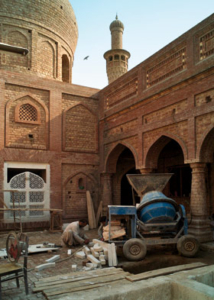
Yet—despite what the hordes at Sehwan may believe—orthodox Sufis are also law-abiding Muslims. There should be no contradiction between these two positions. “Sufism is Islam and Islam is Sufism,” says Khwaja Hasan Thani Nizami, the hereditary keeper of the shrine of Nizamuddin Auliya in Delhi. In orthodox Islam, for example, the limits of sainthood are strictly prescribed. Dead Muslim saints cannot intercede with God or perform miracles. If Muslims pray at their shrines, it can only be for the dead man’s salvation. They may not pray to him, which would be shirk, a form of idolatry. According to Ahmed Javed, a bearded Pakistani Sufi and scholar: “You can’t ask a dead saint to mediate, to solve a problem, to fulfil a wish, never, never, never. That is shirk in law and in Sufism.”
But South Asians never have been terribly law-abiding. Nor, during the centuries-old process of Islamisation that they led, have the Sufi orders always insisted that they should be. This really began in the 13th century, soon after the conquest of Delhi by an army of Persian-speaking Afghans. A powerful Sufi order, the Chistis, proceeded to spread across north India, led by Chisti, the great mystic buried in Ajmer.
Chisti’s initiates wore motley, practised poverty, neglected their families and despised the Muslim sultans and emperors who would rule India for five centuries. In the words of a famous Chisti couplet: “Why must you enter the doors of emirs and sultans? You are walking in the steps of Satan!” The Chistis were known for their love of poetry and, especially, music. Pilgrim-poets still gather in the shrine of Nizamuddin Auliya, another great Chisti saint and poet, in Delhi, wearing the yellow pixie-hats of the order’s initiates.
Under Chisti influence, low-caste Hindus converted to Islam, to escape their low birth. Women, who are everywhere prominent in Sufism, were also especially welcomed. Perhaps most remarkably, the Chistis accepted recalcitrant non-Muslims as Sufi initiates. This set the tone for an astonishingly harmonious cohabitation between Hindus and Muslims in South Asia which continues, though it is sorely tested, to this day.
In the shrine of Shah Abdul Latif Bhitai, a great poet of Sindh, musicians gather to sing hymns. As their voices rise, in the blue-tiled portico of the shrine, a line of brightly clad Hindu women traipse in from the Sindhi desert which, for nomads like them, is still an open border to India. The Pakistani Muslim crowd, seated cross-legged on the forecourt, stirs to give them room. The women pass through, to give obeisance to Bhitai’s tomb. It is a moving scene.
For its message of tolerance, Sufism has long been fashionable outside the Muslim world. Outside Philadelphia, amid rolling green hills, is the shrine of Muhammad Raheem Bawa Muhaiyaddeen, a Sri Lankan Sufi saint, who died in America in 1986. In recent times, moreover, Western interest in Islamic mysticism has become urgent. Some American commentators see Sufis as potential allies in a hostile Muslim world. A report by RAND Corporation, an American think-tank, recommended bolstering Sufism, as an “open, intellectual interpretation of Islam”.
On the face of it, this makes sense. In north-western Pakistan, where the Taliban rule, the Pushtuns have often taken against Sufi saints. According to the 1911 Census of British India, the Afridi tribe, having no shrine to worship at, “induced by generous offers a saint of the most notorious piety to take up his abode among them.” They then slit his throat, buried his corpse, and built a splendid shrine over it. These days, alas, they would probably not build the shrine: the Taliban tend to consider Sufism idolatrous. They are in the same puritan camp as Saudi Arabia’s unforgiving Wahhabi sect, their sometime sponsors. In the land of Muhammad, whom mystics revere as the first Sufi, the Wahhabis have bulldozed many old shrines.
At Qalandar’s shrine in Sehwan, a pilgrim called Tanvir Ahmed describes spending four months among the Taliban last year, in Swat, a Taliban fief near the Afghan frontier. He had thought to join the militants. But he was put off by their injunctions against Sufi saints. To a murmur of approval from other devotees, gathering thickly around us, Mr Ahmed says: “No one can deny our respected saints of God.”
But the urs also presents troubling scenes. As dusk falls, and the crowd dancing the dhammal outside the shrine swells, so does an army of men and boys, stripped to the waist. Legs akimbo, they sing a funeral dirge to the Shia martyr Hussain. It describes the battle of Karbala, in which Hussain fell, and Sunni and Shia Muslims were so painfully divided. As their deep voices rise, so the men’s arms lift together. Then each hand slaps down, with a thwack, on its owner’s red and glistening chest.
Alixandra Fassina
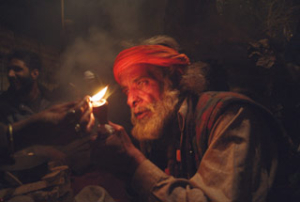
In daylight, inside the shrine, an even more strikingly sectarian ritual takes place. Shia pilgrims flagellate themselves with chains dangling with knife-blades and cry out to Ali, father of the martyred Hussain, and revered in Shia Islam. As they open their backs, sending blood onto the shrine’s floor, other pilgrims recoil. Many appear disgusted. In theory, Sufism transcends Islamic sects. For example, Qalandar was a Shia; many—or most—of his devotees are Sunni. Yet the shrines of Sindh, where many Shia Muslims live, are increasingly seeing strident sectarian displays. This may be partly a reaction to the attacks Pakistani Shias increasingly face from fundamentalists like the Taliban. It is a sign of popular Sufism under duress.
Sufi scholars, in Karachi, Delhi and Lahore, are concerned by this. But none wants government help—least of all from a reviled Western government. Many also note that Sufism is not, as Westerners seem to think, uniform. The conservative Naqshbandis, followers of another of South Asia’s main orders, have helped spread jihad: there was a Naqshbandi insurgent group in Iraq.
Qalandar, one of Pakistan’s most prominent Sufi saints, was not really of any order. He exists in a tradition of eccentric, mendicant Sufis. He was strongly influenced by Hinduism; many Hindus consider him a manifestation of Shiva. A Hindu performs the opening ritual of the annual urs. During the festival many devotees bring clay dishes of henna to Qalandar’s tomb, as to a Hindu bride on her wedding-night, and spread it on themselves, invoking the name of a Hindu water-god.
Amid syncretism, heresy thrives. Outside Qalandar’s mausoleum, just before dusk, a tall bearded man, wrapped in a black cloak and carrying a silver club, shouts into a loud-hailer: “Ali Allah! Allah Ali!”—“Ali is God! God is Ali!” He is Sayeed Ghafur Ali, a fine-looking dervish, and leader of a sect in Karachi which propagates this fearful blasphemy. In many Muslim places it would cost Mr Ali his head. But in Sehwan no one seems to mind. Asked, in a calmer setting, whether he has been a dervish for long, Mr Ali smiles and removes two tightly-bound parcels, about the size of American footballs, from his trouser pockets. They contain his hair, which grows in thick tresses under his cloak. Mr Ali says he has not visited a barber since he dedicated himself to Qalandar.
Unlike most renowned Sufi saints, Qalandar left little literature. In academic histories, his name hardly appears. To plug the gap, his devotees attribute miracles to him. One tells how Qalandar reconstituted a Hindu disciple, Bodhla Bahar, after an evil raja had made mincemeat of him. The narrator of this story may appear to have been smoking drugs. For Qalandar’s black-clad fakirs, many of whom are full time vagrants, much like Hinduism’s dread-locked saddhus, the urs is a wonderful opportunity to eat, dance and get stoned among friends. “Though I only smoke in the mornings to strengthen the body,” cautions Emir Bux, an elderly itinerant inside the shrine, with an orange hennaed beard and a headdress of curvy wooden snakes.
Sex is also to be had at the urs, but less freely. Sufi shrines have always appealed to prostitutes. This is partly because of the Sufis’ tolerance of sinners, but also because they make good places to sin. At Sehwan, which has a name for licentiousness, a transsexual prostitute—or hijra—called Ghazala says she came from Lahore, with 15 of her eunuch sisters, to pray and dance. Smoking a cigarette down to its filter, Ghazala, a muscular figure with greying temples, claims: “We came here only to worship our saint.” That is an unlikely story.
Presiding over this riot, from a grand house beside the shrine, is Mehdi Shah, a doctor from Islamabad, who recently inherited the title of sajjada nishin, or keeper of the shrine. This is an important office in Pakistan. The wardens of its most important shrines, including some, known as pirs, who claim descent from important saints, are among the country’s biggest landowners. This is partly a legacy of their usefulness to two former invaders of South Asia, the Mughals and British, both of whom patronised the shrine-keepers. Since the early 1960s, Pakistani governments have been taking over the most lucrative shrines, including Qalandar’s. But Pakistan’s pirs are still formidable. By one estimate, pir politicians command 10% of the popular vote. The current prime minister, Yusuf Raza Gilani, and foreign minister, Shah Mahmud Qureshi, are both pirs.
Aaron Huey
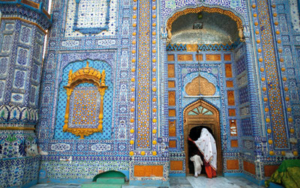
Like so much else in Sehwan Sharif, this tradition has got messy. Mr Shah, the keeper of the shrine, is candid about the responsibilities pir-dom confers: “To guide people and make money.” But he regrets the competition for the office this has engendered. In Sehwan Sharif, several dozen local families claim to be guardians of the shrine. “There may be a thousand Tom, Dick and Harrys claiming to be sajjada nishin,” grumbles Mr Shah.
In a small room next to the shrine, decorated with peacock feathers, one of these wannabes, Paryal Shah, has set up shop. As Mr Shah, a bearded man rattling with amulets, enters the room, pilgrims hurl themselves at his feet. Grunting, occasionally slapping a pilgrim who crushes his toes, Mr Shah dispenses blessings among them. “God will help you,” he growls, doling out white cotton threads, blessed in advance, or a scrap of paper scribbled with a Koranic verse. It is hard to know how seriously anyone takes this charade. Mr Shah’s English-speaking right-hand, Ahmed Bhutto, winks and says that he and Mr Shah’s other disciples practice strict chastity: “I only do it with my wife!”
A more troublesome rival to Mehdi Shah is his uncle, Mozafir Ali Shah. They are locked in a property dispute so ugly that Mehdi Shah refuses even to visit his uncle’s house for a traditional family celebration: a dance performance by a visiting troupe of prostitutes. To the uninitiated, this splendid occasion is not obviously religious. The men of Mozafir Ali’s house sit in proud silence, as prostitutes straddle its courtyard, thrashing their long hair and kissing these hereditary notables’ knees. The women of the house rain rupee notes down on the dancers from a balcony discreetly above. A drummer shouts: “Sakhi Shahbaz Qalandar duma dum mast!”
True Sufis are embarrassed by such scenes. At Delhi’s great Sufi shrine, Mr Nizami, the keeper, says a Sufi must have three qualities: knowledge of Islam; love of God; and sanity. Whatever else they lack, he scoffs, the devotees of Qalandar are insane: “there is no Sufi among them!” Mr Javed, the Sufi in Lahore, agrees. But he contrasts such harmless superstition, as he terms popular Sufi beliefs, with the ruthless literalism of the Taliban. He says: “I feel safe among shallow-minded occultists. I do not feel safe among literalists.”
Scholars like these are Sufism’s true keepers. But in the undergrowth of popular Sufism, it is remarkable how little of their prescriptions survive. It has always been so. The diversity of South Asian Islam is a staggering multicultural achievement. If its mystics, orthodox and popular, are now increasingly besieged by mullahs, fellows of the Taliban, the massive gatherings at Sehwan and other Pakistani shrines suggest they will not be overrun soon.
Moreover, South Asia’s popular Sufism is not all degenerate. Some of South Asia’s greatest artistic achievements, especially in architecture, are expressions of it. The shrine to Baba Hassan Din rising in Lahore is among them.
Mr Qadeer and Mr Niaz, the disciples of Hafiz Iqbal, began work on it a few months after his death. It is being constructed entirely in natural materials, including clay bricks, white marble, gemstones, and lime plaster strengthened, as luck would have it, by the thousands of frogs that perished in it. The craftsmen building the shrine use traditional tools and techniques, some revived especially for the task.
Unsupported by concrete, the shrine’s domes rest on the weight of their own artful construction. Its cloisters are modelled on the shrine of Imam Ali in Najaf. Its bejewelled mosaics are copied from the walls of Delhi’s 17th-century Red Fort. On the walls of the false burial chambers, Koranic verses, chosen by Hafiz Iqbal, have been inscribed in an ink made from burned mustard oil, in a style of calligraphy taken from the Taj Mahal. It is a wonderful creation. Kamil Khan Mumtaz, the architect, a Sufi initiate himself, believes there has been no Islamic monument built like it, anywhere in the Muslim world, for 300 years. May it last longer.
This article appeared in the Christmas Specials section of the print edition under the headline “Of saints and sinners”
